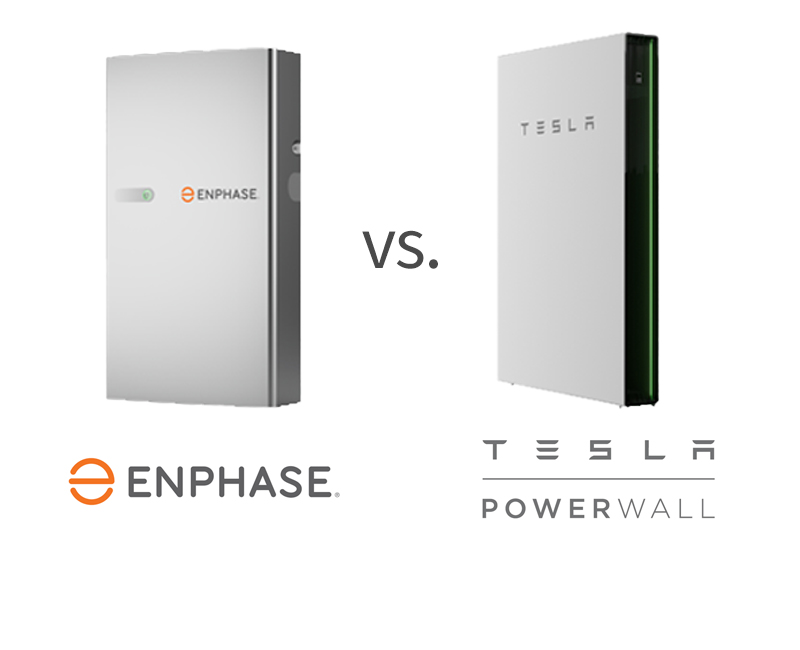
Enphase IQ Battery 5P vs Tesla Powerwall 2: A Side-by-Side Comparison.
See how the Enphase IQ Battery 5P stacks up against its biggest competition – the Tesla Powerwall 2.
A Quick Comparison
| Feature | Enphase IQ Battery 5P | Tesla Powerwall 2 |
| Capacity | 5 kWh | 13.5 kWh |
| Peak Power Output | 7.68 kW (3 sec.)
6.14 kW (10 sec.) 5 kW (4 hrs.) |
7 kW (10 hrs.) |
| Backup Time | Up to 4 hours | Up to 10 hours |
| Number of Microinverters per Battery | 6 | 1 |
| Installation Complexity | Modular design, integrates with existing system | Requires a specific inverter |
| Warranty | 15 years | 10 years |
| Chemistry | Lithium Iron Phosphate (LiFePO4) | Lithium-ion |
| Pricing | Can be more cost-effective per kWh | Generally higher |
Tesla Powerwall 2 vs. Enphase IQ Battery 5P: A Deeper Dive
Capacity and Backup Time
The Powerwall 2 has a significantly higher capacity at 13.5 kWh compared to the 5P’s 5 kWh. This means the Powerwall 2 can store more energy and provide longer backup times.
The Powerwall 2 can provide up to 10 hours of backup at peak power, while the 5P can provide up to 4 hours. However, the actual backup time can vary depending on your energy consumption and the amount of energy stored in the battery.
Installation and Integration
The Powerwall 2 requires a specific inverter and a more complex installation process. The 5P, on the other hand, is a modular component that can be easily integrated with existing solar systems.
The 5P is designed to work seamlessly with Enphase microinverters, making it a great choice for homeowners who already have an Enphase solar system. The Powerwall 2 is more versatile and can be used with various solar systems.
Cost
The Powerwall 2 generally has a higher upfront cost compared to the 5P. However, the 5P may be more cost-effective per kWh, especially when considering the modular design and potential for future expansion.
Warranty
Both batteries offer a long warranty. The Powerwall 2 has a 10-year warranty, while the 5P has a 15-year warranty.
Chemistry
The Powerwall 2 uses lithium-ion technology, while the 5P uses lithium iron phosphate (LiFePO4) technology. LiFePO4 batteries are generally considered safer and more durable than lithium-ion batteries.
Conclusion
The best choice between the Tesla Powerwall 2 and the Enphase IQ Battery 5P depends on your specific needs and preferences. If you need a high-capacity battery with long backup times, the Powerwall 2 might be a good option. If you prefer a modular design, easy installation, and potentially lower cost per kWh, the 5P could be a better fit. It’s recommended to consult with a solar installer to get a personalized assessment and recommendation based on your specific needs and circumstances.
Protect Your Home From Outages.
Fill out the form below to speak to an expert about a Solar Battery Backup System.
